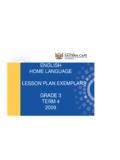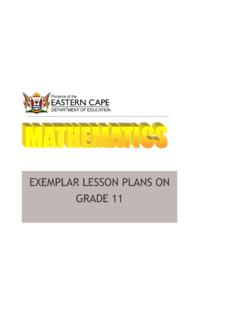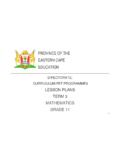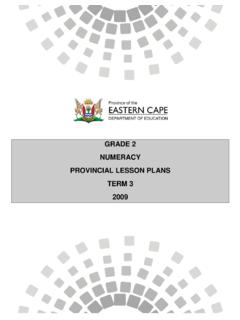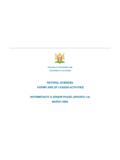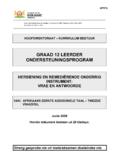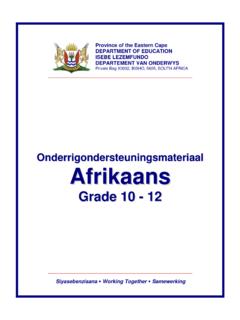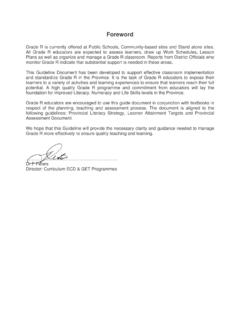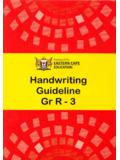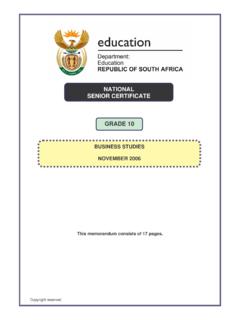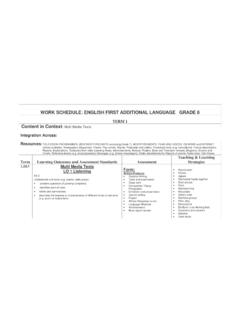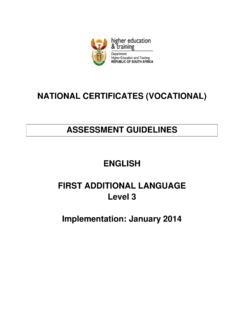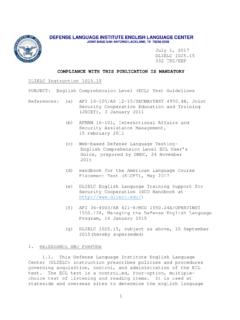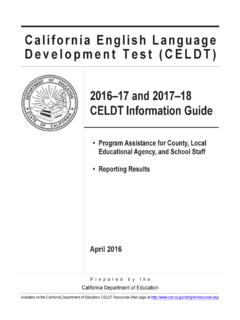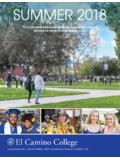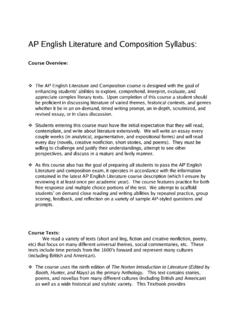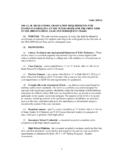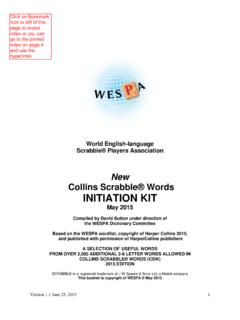Transcription of WORK SCHEDULE: ENGLISH FIRST ADDITIONAL LANGUAGE …
1 1 WORK schedule : ENGLISH FIRST ADDITIONAL LANGUAGE GRADE 9 TERM 1 Context: Multi Media Text Week: 1-4 Content: LO 1 AS 2 LO 2 AS 2, & 4 LO 3 AS 3,5 & 6 LO 4 AS 2,3 &,5 LO 5 AS 2&3 LO 6:4& 6 Context: Drama/ Play Week: 5-9 Content: LO1 AS 2 & 4 LO 2 AS 2,3 & 4 LO 3 AS1,6 & 9 LO 4 AS 4,6&7 LO 5 AS 2 LO 6: AS 2,4,5 &6 Context: Poetry Week: 10-11 Content: LO 1 AS 2 & 4 LO 2 AS 3& 5 LO 3 AS 2,6 & 9 LO 4 AS 4& 6 LO 5 AS 2 LO 6: AS 7&8 TERM 2 Context: Text from other Learning Area Week: 1-4 Content: LO 1 AS 3 LO 2 AS 2 & 4 LO 3 AS 1,4,7,8,9 LO 4 AS 1 & 6 LO 5 AS 1& 3 LO 6: 1,7,8,& 9 Context: Multi Media Week: 5-7 Content: LO 1 AS 2 LO 2 AS 2, & 4 LO 3 AS 3,5 & 6 LO 4 AS 2,3 &,5 LO 5 AS 2&3 LO 6:4& 6 Context: Novel Week: 6-10 Content: LO 1 AS 1,2 & 4 LO 2 AS 1 ,3 & 5 LO 3 AS 1, 6,7& 8 LO 4 AS 4 ,6 &7 LO 5 AS 2 LO 6:1,3,7 &9 Standardised Assessment Tasks.
2 2 LEARNING AREA TERM OVERVIEW: ENGLISH FIRST ADDITIONAL LANGUAGE GRADE 9 TERM 3 Context: Multi Media Week: 1-3 Content: LO 1 AS 2 LO 2 AS 2, & 4 LO 3 AS 3,5 & 6 LO 4 AS 2,3 &,5 LO 5 AS 2&3 LO 6:4& 6 Context: Text from other Learning Area Week: 4-6 Content: LO 1 AS 3 LO 2 AS 2 & 4 LO 3 AS 1,4,7,8,9 LO 4 AS 1 & 6 LO 5 AS 1& 3 LO 6: 1,7,8,& 9 Context: Drama Week: 7-10 Content: LO1 AS 2 & 4 LO 2 AS 2,3 & 4 LO 3 AS1,6 & 9 LO 4 AS 4,6&7 LO 5 AS 2 LO 6: AS 2,4,5 &6 TERM 4 Context: Poetry Week: 1-3 Content: LO 1 AS 2 & 4 LO 2 AS 3& 5 LO 3 AS 2,6 & 9 LO 4 AS 4& 6 LO 5 AS 2 LO 6: AS 7&8 Context: Drama Week: 4-6 Content: LO1 AS 2 & 4 LO 2 AS 2,3 & 4 LO 3 AS1,6 & 9 LO 4 AS 4,6&7 LO 5 AS 2 LO 6: AS 2,4,5 &6 External Assessment Tasks.
3 3 LESSON PLAN ENGLISH FIRST ADDITIONAL Context: POETRY Time: 3 weeks Grade: 9 LO s and As s TEACHER AND LEARNER ACTIVITIES ASSESSMENT Methods/tools/forms . Lo: 1 Listening As 2,4 As 2 Understands oral texts ( radio talk shows, texts with statistics): answers questions; retells and summarises; identifies point of view and is able to offer an alternative point of view; analyses the features of different kinds of oral texts ( a conversation, a story). As 4 Listens actively in a discussion: Form : Discussion Methods: Teacher class Tool: Rubric,rating scale,checklist 4 shows openness to ideas and treats the views of others critically but with respect; invites contributions from others and responds to their views; is prepared to challenge others but does so politely and does not interrupt them; criticises the ideas and not the person.
4 Lo 2 Speaking As 3,5 As 3 Shows developing ability to use features of spoken LANGUAGE to communicate: word stress, weak vowels, intonation and rhythm. As 5 Is interviewed by someone ( a job interview): anticipates the questions that will be asked and prepares for them; answers questions; uses appropriate tone, register and body LANGUAGE . Lo 3 Reading and viewing As 2,6 As 2 Understands some elements of poetry ( metaphor, rhythm), and understands some of the terms used to describe this LANGUAGE ( metaphor). As 6 Uses reading strategies: skims texts - identifies the topic and key points, and uses layout features ( illustrations); matches different ways of reading to different texts Activity 2 !
5 " # $ # $" % & % What is the message of the poem? Write a paragraph explaining what the poem is about. Activity 3 Teach learners the elements of poetry metaphor,simile meaning and examples of each. Learners must write them in their note them an exercise where learners would write sentences using the figures of learners work in groups. Let the learners in pairs come up with examples and make posters for the classroom Form: Summary writing Method: Teacher Peer Tool: Rubric/rating scale/checklist Form:Class work Method: Teacher,pairs,peer,gruop Tool: Memorandum 5( skims newspaper articles for main ideas); develops and evaluates reading speed; uses strategies to work out the meaning of words ( discusses the word in home LANGUAGE ).
6 As 9 Demonstrates a reading vocabulary of between 6 000 an 7 500 common words. Learners who will study other Learning Areas through their ADDITIONAL LANGUAGE should aim for 7 500 words. Lo 4 Writing As 4,6 As 4 Writes creatively: translates stories (and other texts) from home LANGUAGE - tries to capture the idiom and notices how idiom (and often values) are different in the two languages; shows development in the ability to write stories, poems and play-scripts ( by working with design). As 6 Treats writing as a process: drafts, reads and discusses own writing critically; uses feedback to revise, edit and rewrite; uses knowledge of grammar, spelling, etc.
7 , to edit; plans the layout of a text, including how to incorporate graphs and pictures; evaluates design and layout. Lo 5 Thinking and Reasoning As 2 & ' Activity 6 Write a poem. Activity 7 Answer the following questions. How does the poem make us feel? Give examples. Find verbs in the poem. Explain how the verbs help us to picture the down the elements found in the poem and give Form: Written assignment Tool: rubric Method:Teacher/Gruop/pair 6As 2 Uses LANGUAGE for thinking: asks and answers more complex questions; expands generalisations, definitions and classifications into paragraphs; thinks of examples for general statements; understands and uses evidence to support a theory or argument ( scientific evidence); draws conclusions.
8 Lo 6 LANGUAGE and structure As 7,8 As 7 Uses complex sentences ( relative clauses). As 8 Uses some LANGUAGE to talk about LANGUAGE (meta- LANGUAGE - terms such as paragraph). Activity 8 Make a list of all the words you dont know in the poem and look it up in the dictionary to find out what they mean. Write it down in your notebook. Form:Classwork /Test/Homework Method: Teacher/Pair/peer Tool:Memorandum Barriers to leaning: Learners given a copy of the drama Learners sit next to someone (academically stronger) Learners with speech problems and struggles to complete speaking tasks effectively could be scaffolded by peers or more time could be provided Learners who might have difficulty in completing reading tasks, could be provided with texts with a bigger font or could be given more time to complete tasks Access to libraries or books.
9 Newspapers and magazines at home should be organized Learners who may experience difficulties in writing well structured paragraphs or essays may be provided with ADDITIONAL scaffolding in the writing process Learners with cognitive barriers which negatively impacts on the thinking and reasoning process could be given more opportunities to practice this skill. Resources: Dictionaries, poems, diaries, conversations, songs, magazines 7 LESSON PLAN ENGLISH FIRST ADDITIONAL Context: Short stories/Novel Time: 3 weeks Grade: 9 LO s AND AS s TEACHER ACTIVITIES LEARNER ACTIVITIES ASSESSMENT Methods/tools/forms Lo: 1 Listening As 1,2,4 As 1 Understands and appreciates stories, including those told by other learners: responds personally and critically, asks and answers questions.
10 Evaluates the storytelling technique and performance and gives feedback. As 2 Understands oral texts ( radio talk shows, texts with statistics): answers questions; retells and summarises; identifies point of view and is able to offer an alternative point of view; analyses the features of different kinds of ( ) *+ & , ( *- ' ( ) *. *( * *. % / & 0 1 ( 2 3 & , & + 8oral texts ( a conversation, a story). As 4 Listens actively in a discussion: shows openness to ideas and treats the views of others critically but with respect; invites contributions from others and responds to their views; is prepared to challenge others but does so politely and does not interrupt them; criticises the ideas and not the person.)))
